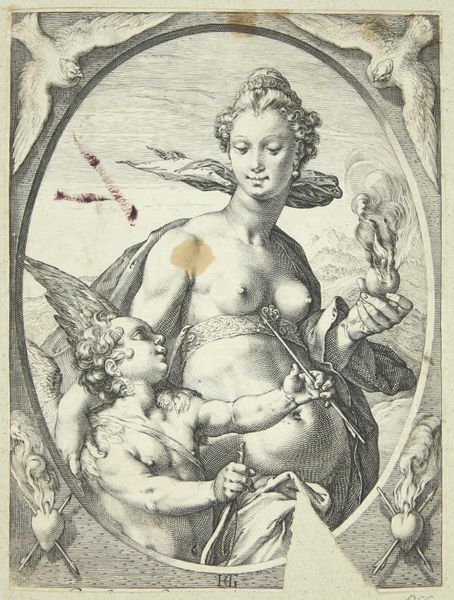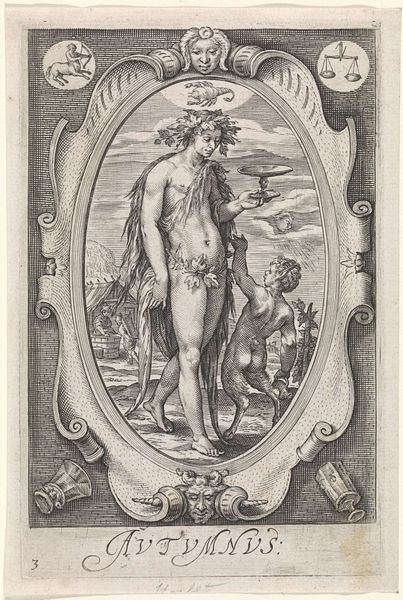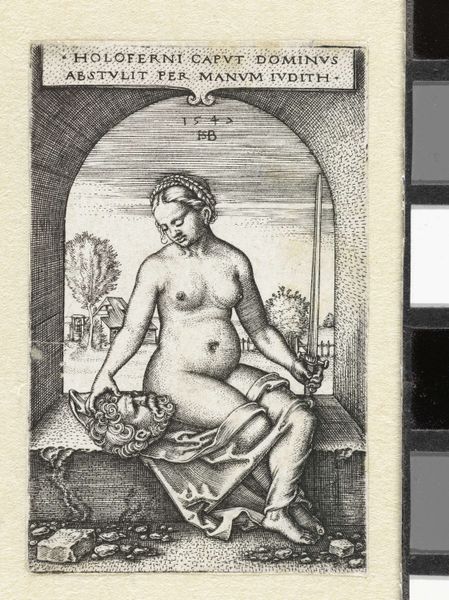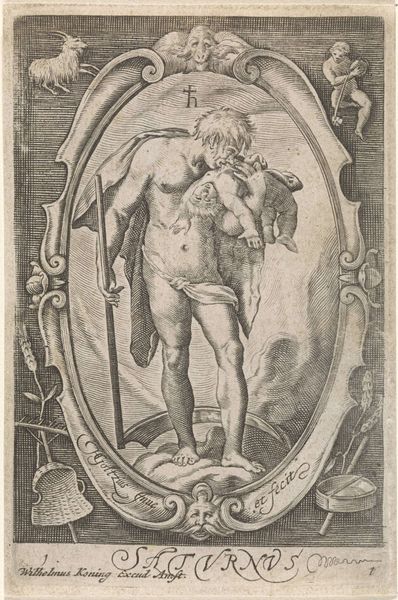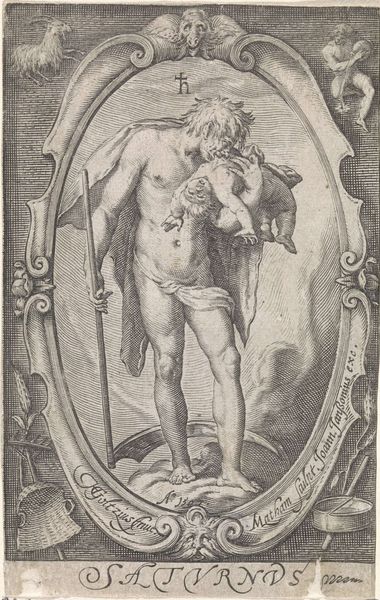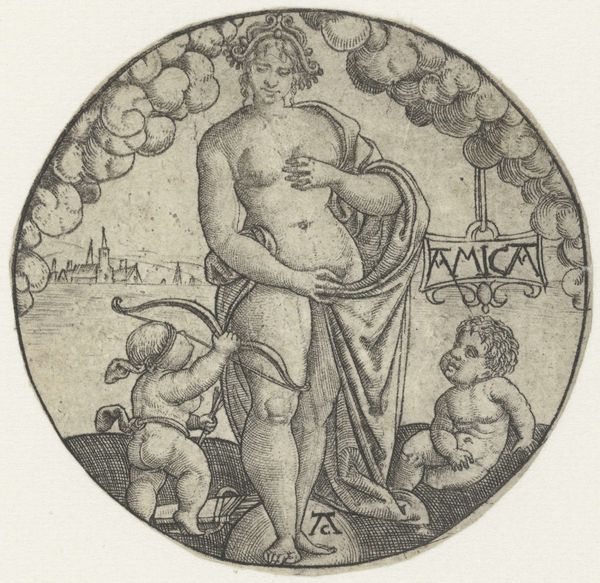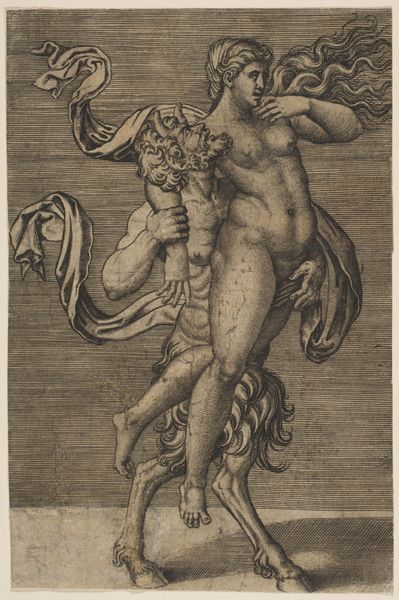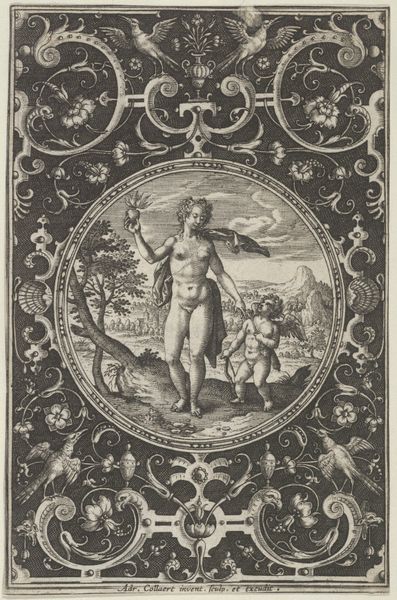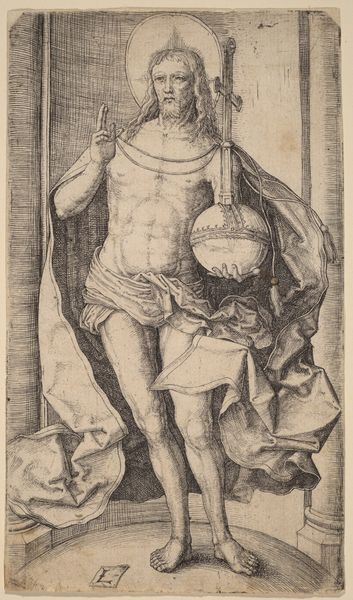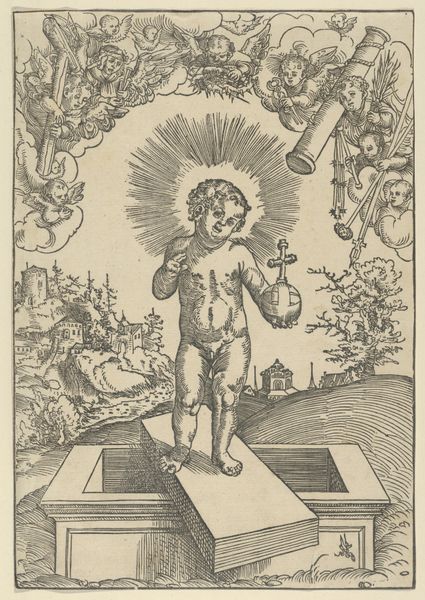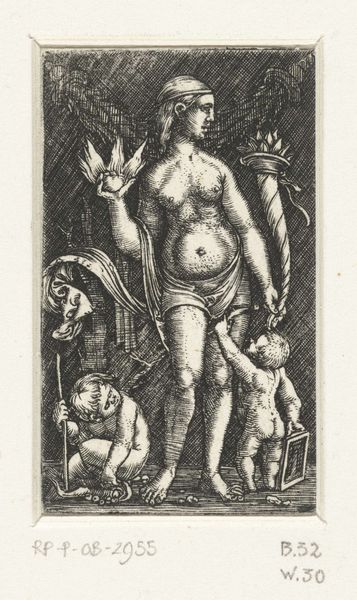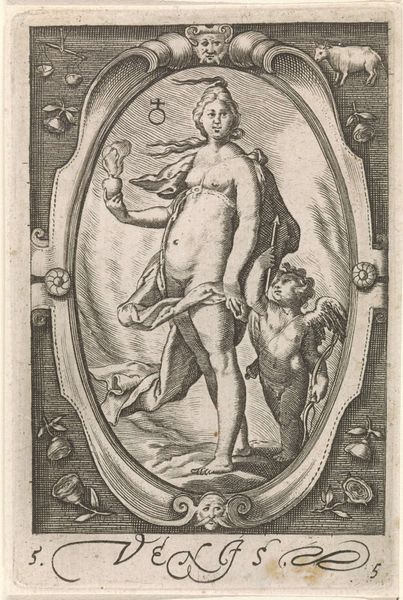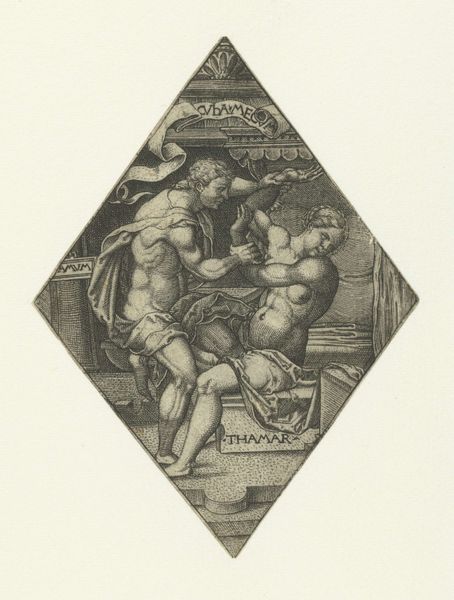
print, engraving
# print
#
figuration
#
11_renaissance
#
line
#
history-painting
#
italian-renaissance
#
nude
#
engraving
Dimensions: sheet: 6.3 × 4 cm (2 1/2 × 1 9/16 in.)
Copyright: National Gallery of Art: CC0 1.0
Curator: What a powerfully unsettling image. The diamond shape immediately focuses the gaze, doesn't it? It feels...constrained. Editor: It certainly does. Let me introduce the print. This is "Lucretia," attributed to the enigmatic Master S, an Italian Renaissance engraving. The technique employed—lines, almost surgically precise—emphasizes the tragedy. Curator: "Master S," a fascinating moniker shrouded in mystery. Who were they, I wonder, and what was their relationship to the Roman narrative of Lucretia's suicide following her rape by Sextus Tarquinius? Editor: That's the historian's question, isn't it? Though unsigned beyond that initial, "Master S," it’s an artwork that compels one to examine power, gender, and agency in the visual arts. Note the stoicism in her stance; it feels quite purposeful. Curator: Exactly. Her act, immortalized through centuries, transformed from a personal tragedy into a symbol of resistance. What visual elements evoke this transformation? For instance, a sword bisects her torso, yet her gaze remains resolute, unflinching. Is that dog at her feet? Editor: Indeed, perhaps indicative of loyalty? And observe, in the upper portion of the frame, clouds form above Lucretia as the land stretches toward an architectural presence--some kind of fortification perhaps. These are not insignificant background images but contribute toward the narrative, indicating social systems behind individual tragedies. The print presents a woman seizing control in a world stacked against her. Curator: The Italian Renaissance, and this image of Lucretia, acts as a kind of conduit to explore that idea across epochs, even today, doesn't it? Images as echoes, carrying their weight forward. This idea seems inscribed, deeply and permanently, within the diamond shape—quite a testament to its enduring power. Editor: Precisely. It shows that prints, even seemingly simple engravings like this one, are never truly isolated objects. Their reception is perpetually shaped by history. Curator: Master S’s “Lucretia," therefore, remains a challenge—and an invitation—to excavate our present through the relics of the past. Editor: An elegant ending, wouldn’t you say? It makes clear this historical inquiry reflects current social dynamics, while asking the viewer to think critically about the function of imagery and art's function in shaping, challenging, and interrogating historical and cultural conditions.
Comments
No comments
Be the first to comment and join the conversation on the ultimate creative platform.
